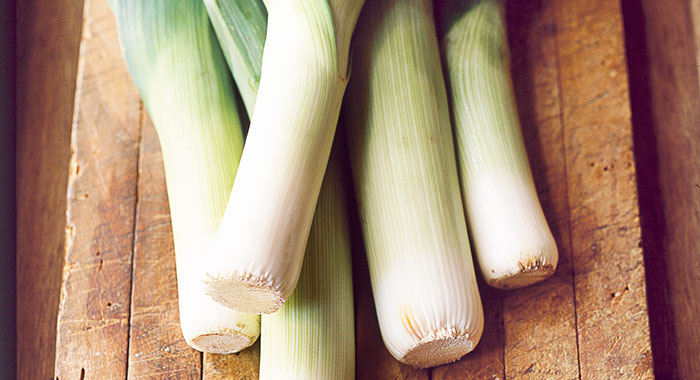
Pronounce it: lee-k
Like garlic and onion, leeks are a member of the allium family, but have their own distinct flavour – quite harsh when raw (only very young leeks are eaten this way) but, when cooked, very delicate, like a mild onion but with a hint of sweetness. Two thirds of their length is white and firm, and this is the part that is mainly eaten. The rest of the third is made up of the leaves (flags), most of which is discarded.
Leeks are very versatile and work well cooked in various recipes or as a side dish. Two of the world’s most famous soups, Scotland’s cock-a-leekie and France’s crème vichyssoise, are based around them.
Availability
All year round, but at their best from September to March.
Choose the best
Look for leeks with a firm, unblemished white lower part, and leaves that are bright green, with a crisp texture. Smaller leeks tend to be sweeter and more tender.
Prepare it
Thorough washing is very important for leeks, as soil is often trapped between the many layers of leaves. First, trim off the base, and cut away the uppermost part of the leaves. If it’s tough, remove the outer layer or while. Then, if you want to keep the leek whole, use a knife to make a slit from the top to the point where the green meets the white, cutting through the centre. Rinse well under running water, pulling back the layers so that any dirt at the base is removed. Alternatively, slice the leeks, then put in a colander and wash well under running water.
Store it
In the fridge, for up to a week. As their strong aroma can taint other foods, make sure they are well wrapped.
Cook it
Steam (up to 8 minutes for sliced; up to 16 minutes for whole). Pan fry (up to 8 minutes, sliced). Also good as an ingredient in casseroles, tarts, pies and soups.
Alternatives
Try onion.
Be the first to comment on "Leek"